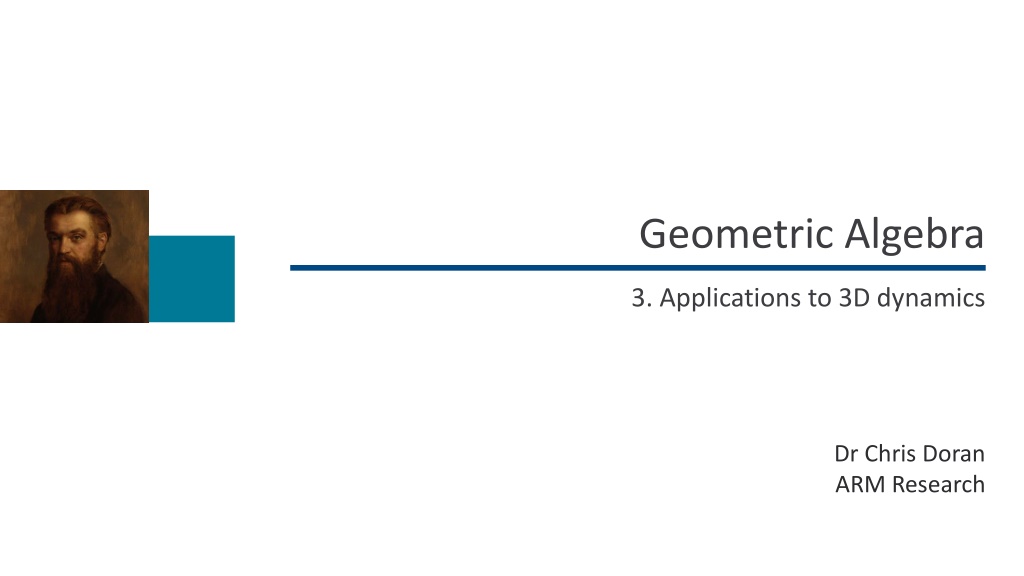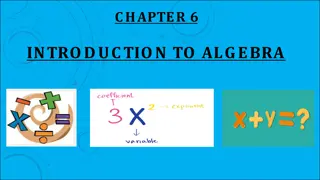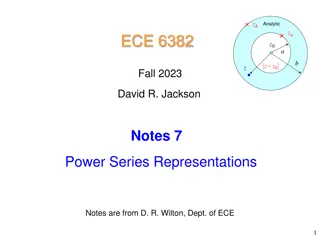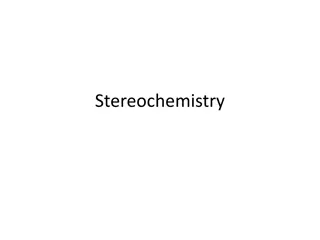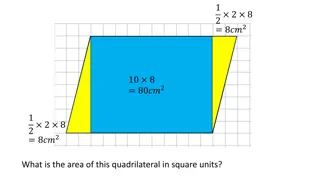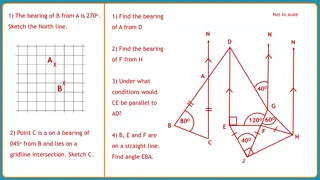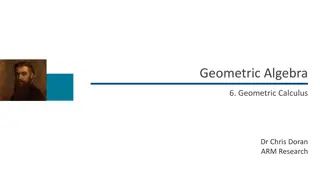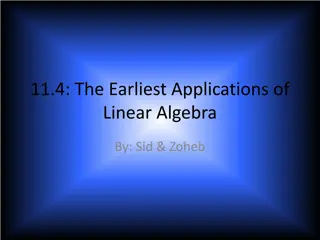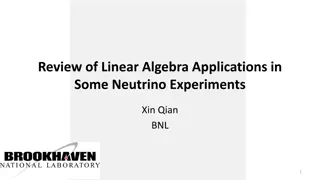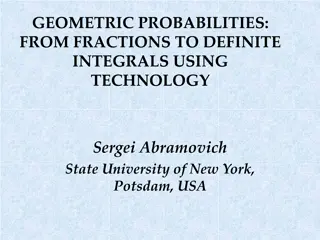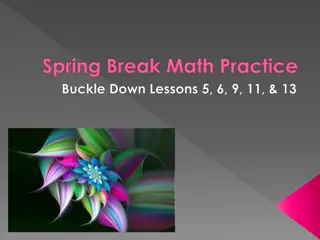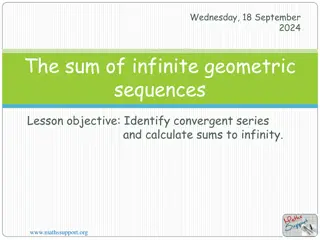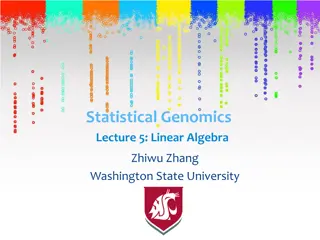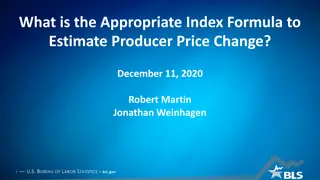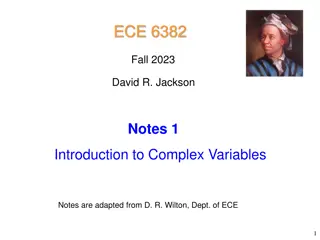Geometric Algebra Applications in 3D Dynamics with Dr. Chris Doran
Exploring the applications of geometric algebra in 3D dynamics, this content covers topics such as quaternions, inner products in rotations, angular momentum as a bivector, torque, conserving vectors in inverse-square force fields, rotating frames, and Lie group derivatives. The material delves into the concept of rotor derivatives, constant angular velocity scenarios, and rigid-body dynamics in a comprehensive manner, demonstrating practical insights and theoretical foundations in a structured format.
Download Presentation

Please find below an Image/Link to download the presentation.
The content on the website is provided AS IS for your information and personal use only. It may not be sold, licensed, or shared on other websites without obtaining consent from the author. Download presentation by click this link. If you encounter any issues during the download, it is possible that the publisher has removed the file from their server.
E N D
Presentation Transcript
Geometric Algebra 3. Applications to 3D dynamics Dr Chris Doran ARM Research
L3 S2 Recap Even grade = quaternions Grade 0 1 Scalar Grade 1 3 Vectors Grade 2 Grade 3 3 Plane / bivector 1 Volume / trivector Rotation Rotor Symmetric Antisymmetric
L3 S3 Inner product Should confirm that rotations do indeed leave inner products invariant Can also show that rotations do indeed preserve handedness
L3 S4 Angular momentum Trajectory Angular momentum measures area swept out Velocity Momentum Force An axial vector instead of a polar vector Traditional definition Much better to treat angular momentum as a bivector
L3 S5 Torque Differentiate the angular momentum Define the torque bivector Define But Differentiate So
L3 S6 Inverse-square force Simple to see that torque vanishes, so L is conserved. This is one of two conserved vectors. Define the eccentricity vector Forming scalar part of Lvx find So
L3 S7 Rotating frames Rotor R Frames related by a time dependent rotor Replace this with a bivector Traditional definition of angular velocity Need to understand the rotor derivative, starting from
L3 S8 Rotor derivatives Lie group Lie algebra An even object equal to minus it s own reverse, so must be a bivector As expected, angular momentum now a bivector
L3 S9 Constant angular velocity Integrates easily in the case of constant Omega Fixed frame at t=0 Example motion around a fixed z axis:
L3 S10 Rigid-body dynamics Dynamic position of the centre of mass Fixed reference copy of the object. Origin at CoM. Dynamic position of the actual object Constant position vector in the reference copy Position of the equivalent point in space
L3 S11 Velocity and momentum Spatial bivector Body bivector True for all points. Have dropped the index Use continuum approximation Centre of mass defined by Momentum given by
L3 S12 Angular momentum Need the angular momentum of the body about its instantaneous centre of mass Define the Inertia Tensor This is a linear, symmetric function Fixed function of the angular velocity bivector
L3 S13 The inertia tensor Inertia tensor input is the bivector B. Body rotates about centre of mass in the B plane. Angular momentum of the point is Back rotate the angular velocity to the reference copy Find angular momentum in the reference copy Rotate the body angular momentum forward to the spatial copy of the body
L3 S14 Equations of motion From now on, use the cross symbol for the commutator product Introduce the principal axes and principal moments of inertia No sum The commutator of two bivectors is a third bivector Symmetric nature of inertia tensor guarantees these exist
L3 S15 Equations of motion Inserting these in the above equation recover the famous Euler equations Objects expressed in terms of the principal axes
L3 S16 Kinetic energy Use this rearrangement In terms of components
L3 S17 Symmetric top Body with a symmetry axis aligned with the 3 direction, so Action of the inertia tensor is Third Euler equation reduces to Can now write
L3 S18 Symmetric top Define the two constant bivectors Rotor equation is now Fully describes the motion Internal rotation gives precession Fixed rotor defines attitude at t=0 Final rotation defines attitude in space
L3 S19 Resources geometry.mrao.cam.ac.uk chris.doran@arm.com cjld1@cam.ac.uk @chrisjldoran #geometricalgebra github.com/ga
